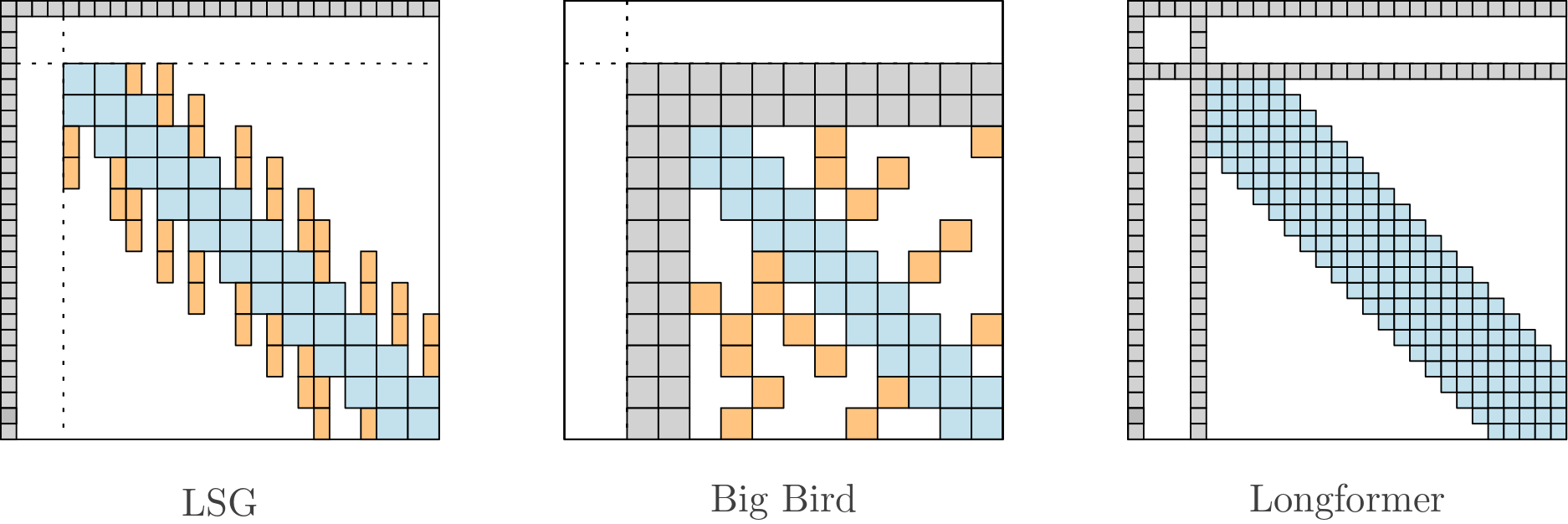language: en
tags:
- long context
LSG model
Transformers >= 4.36.1
This model relies on a custom modeling file, you need to add trust_remote_code=True
See #13467
LSG ArXiv paper.
Github/conversion script is available at this link.
This model can handle long sequences but faster and more efficiently than Longformer or BigBird (from Transformers) and relies on Local + Sparse + Global attention (LSG).
The model requires sequences whose length is a multiple of the block size. The model is "adaptive" and automatically pads the sequences if needed (adaptive=True in config). It is however recommended, thanks to the tokenizer, to truncate the inputs (truncation=True) and optionally to pad with a multiple of the block size (pad_to_multiple_of=...). \
The model is trained starting from a RoBERTa-base checkpoint on 16Gb of data (Wikipedia, Bookcorpus etc...) using the same number of parameters/layers and the same tokenizer.
Support encoder-decoder and causal masking but I didnt test it extensively.
Implemented in PyTorch.
Usage
The model relies on a custom modeling file, you need to add trust_remote_code=True to use it.
from transformers import AutoModel, AutoTokenizer
model = AutoModel.from_pretrained("ccdv/lsg-base-4096", trust_remote_code=True)
tokenizer = AutoTokenizer.from_pretrained("ccdv/lsg-base-4096")
Parameters
You can change various parameters like :
- the number of global tokens (num_global_tokens=1)
- local block size (block_size=128)
- sparse block size (sparse_block_size=128)
- sparsity factor (sparsity_factor=2)
- mask_first_token (mask first token since it is redundant with the first global token)
- see config.json file
Default parameters work well in practice. If you are short on memory, reduce block sizes, increase sparsity factor and remove dropout in the attention score matrix.
from transformers import AutoModel
model = AutoModel.from_pretrained("ccdv/lsg-base-4096",
trust_remote_code=True,
num_global_tokens=16,
block_size=64,
sparse_block_size=64,
attention_probs_dropout_prob=0.0
sparsity_factor=4,
sparsity_type="none",
mask_first_token=True
)
Sparse selection type
There are 6 different sparse selection patterns. The best type is task dependent.
If sparse_block_size=0 or sparsity_type="none", only local attention is considered.
Note that for sequences with length < 2*block_size, the type has no effect.
sparsity_type="bos_pooling"(new)- weighted average pooling using the BOS token
- Works best in general, especially with a rather large sparsity_factor (8, 16, 32)
- Additional parameters:
- None
sparsity_type="norm", select highest norm tokens- Works best for a small sparsity_factor (2 to 4)
- Additional parameters:
- None
sparsity_type="pooling", use average pooling to merge tokens- Works best for a small sparsity_factor (2 to 4)
- Additional parameters:
- None
sparsity_type="lsh", use the LSH algorithm to cluster similar tokens- Works best for a large sparsity_factor (4+)
- LSH relies on random projections, thus inference may differ slightly with different seeds
- Additional parameters:
- lsg_num_pre_rounds=1, pre merge tokens n times before computing centroids
sparsity_type="stride", use a striding mecanism per head- Each head will use different tokens strided by sparsify_factor
- Not recommended if sparsify_factor > num_heads
sparsity_type="block_stride", use a striding mecanism per head- Each head will use block of tokens strided by sparsify_factor
- Not recommended if sparsify_factor > num_heads
Tasks
Fill mask example:
from transformers import FillMaskPipeline, AutoModelForMaskedLM, AutoTokenizer
model = AutoModelForMaskedLM.from_pretrained("ccdv/lsg-base-4096", trust_remote_code=True)
tokenizer = AutoTokenizer.from_pretrained("ccdv/lsg-base-4096")
SENTENCES = ["Paris is the <mask> of France.", "The goal of life is <mask>."]
pipeline = FillMaskPipeline(model, tokenizer)
output = pipeline(SENTENCES, top_k=1)
output = [o[0]["sequence"] for o in output]
> ['Paris is the capital of France.', 'The goal of life is happiness.']
Classification example:
from transformers import AutoModelForSequenceClassification, AutoTokenizer
model = AutoModelForSequenceClassification.from_pretrained("ccdv/lsg-base-4096",
trust_remote_code=True,
pool_with_global=True, # pool with a global token instead of first token
)
tokenizer = AutoTokenizer.from_pretrained("ccdv/lsg-base-4096")
SENTENCE = "This is a test for sequence classification. " * 300
token_ids = tokenizer(
SENTENCE,
return_tensors="pt",
#pad_to_multiple_of=... # Optional
truncation=True
)
output = model(**token_ids)
> SequenceClassifierOutput(loss=None, logits=tensor([[-0.3051, -0.1762]], grad_fn=<AddmmBackward>), hidden_states=None, attentions=None)
Training global tokens
To train global tokens and the classification head only:
from transformers import AutoModelForSequenceClassification, AutoTokenizer
model = AutoModelForSequenceClassification.from_pretrained("ccdv/lsg-base-4096",
trust_remote_code=True,
pool_with_global=True, # pool with a global token instead of first token
num_global_tokens=16
)
tokenizer = AutoTokenizer.from_pretrained("ccdv/lsg-base-4096")
for name, param in model.named_parameters():
if "global_embeddings" not in name:
param.requires_grad = False
else:
param.required_grad = True
